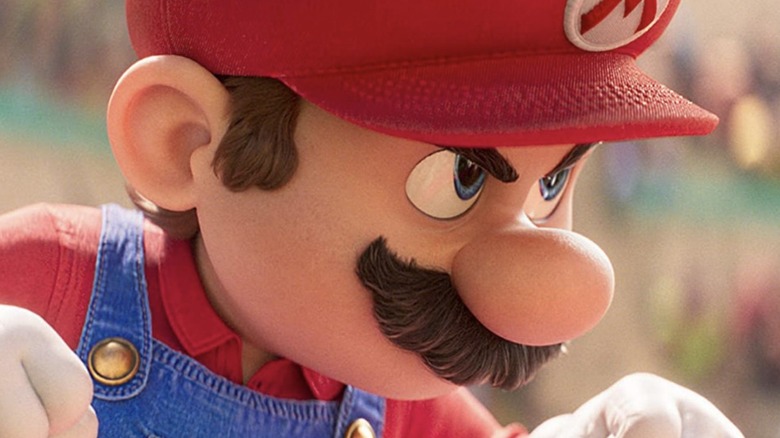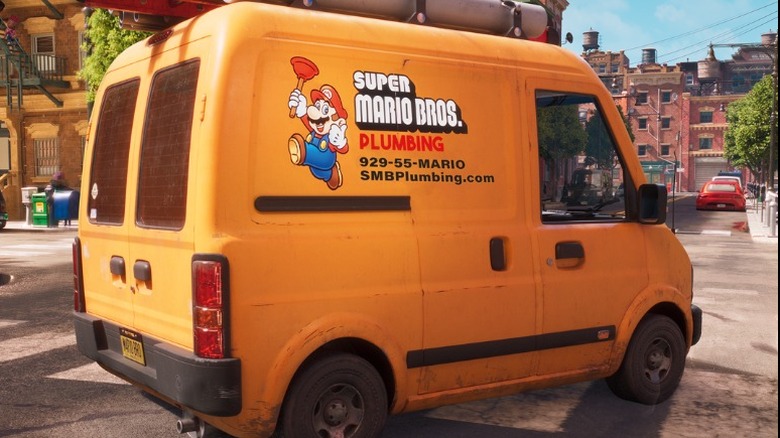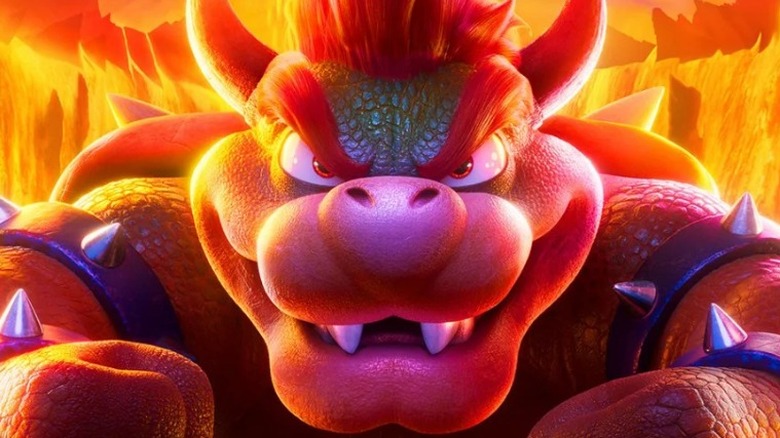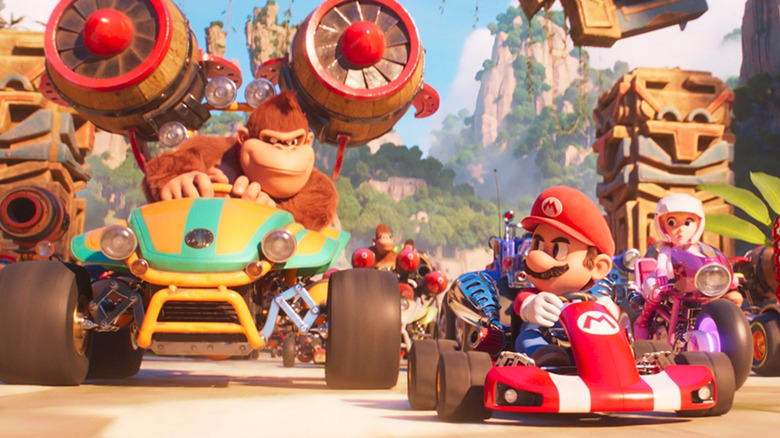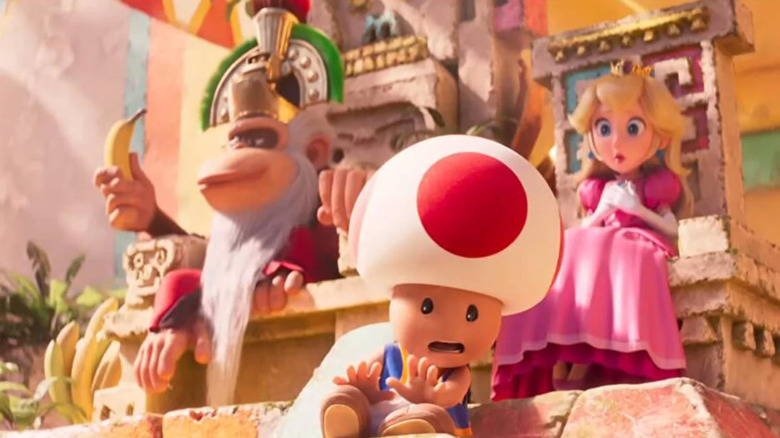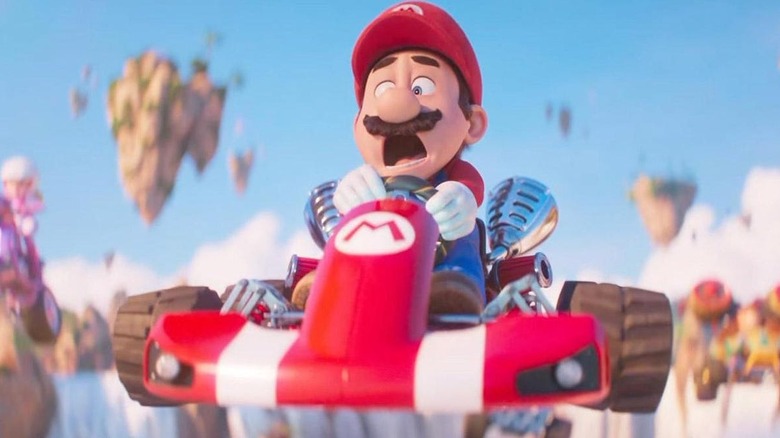Things In The Super Mario Bros. Movie You Only Notice As An Adult
"The Super Mario Bros. Movie" is a (mostly) family-friendly adventure with everyone's favorite plumbers, Mario and Luigi, but it also includes a few details that only the adults in the audience will pick up on. From adult job responsibilities to emotional depths that kids can't quite grasp, the film contains plenty of things for older viewers to ponder.
Don't get us wrong – "The Super Mario Bros. Movie" ranks high with SVG, and most audiences should enjoy it. It's just that it actually works on a variety of levels, allowing the grown-ups in the crowd additional things to think about. Okay, so the movie doesn't have as many adult references as the "Super Mario Bros." game series, nor does it give viewers any clarity on Princess Peach and Mario's notoriously convoluted relationship, but that doesn't mean there aren't a few details that might raise adults' eyebrows. Here's how Nintendo and Illumination dropped some moments for the adults in "The Super Mario Bros. Movie."
How terrible was working for Spike?
Foreman Spike doesn't do anything to endear himself to viewers, and he seems like an all-around terrible boss. But just how terrible was he? Near the beginning of the film, viewers learn that Mario and Luigi struck out on their own after working as part of Spike's crew. Mario and Luigi don't go into detail about how Spike ran his operation, but one encounter with Spike hints at how much joy he takes in demeaning others to make himself feel important.
Little kids, who don't have years of work experience to make them jaded, might not notice how Spike tells Mario and Luigi they'll fail in order to create an elevated view of his own business. Spike doesn't believe in the brothers because he can't imagine a world where he's not the best at what he does, not because they lack the skill or won't be able to make a business. After all, bad guys can't handle losing power over others. And he was apparently awful enough that Mario and Luigi took a huge risk starting their own business, rather than deal with Spike anymore.
Bowser is hiding a lot of sadness
Jack Black's turn as Bowser has audiences everywhere falling in love with the grumpy dragon, but could the villain's anger hide something more emotional? Kids will definitely pick up on the audaciousness of Bowser's plan to kidnap and marry Princess Peach, but they might not recognize that his plan masks a lot of hidden pain. Bowser wants to marry Peach because he believes that a happy union will solve all of his problems, which seem to involve his self-esteem and perception of himself.
Seeing Mario and Peach interacting, Bowser suddenly becomes enraged, yelling that Mario has ruined his chance to experience happiness. While the outburst could be related to losing out on an opportunity to rule the Mushroom Kingdom, adults might recognize that Bowser feels the burn of being rejected by someone he apparently cares about. At the very least, he seems to really think this wedding is the one thing that could have cured his depression.
It's not entirely clear why Bowser feels so adamant about marrying Peach, but grown-ups likely know what it feels like to be looked over in favor of another suitor. It stinks, but not enough to destroy a kingdom over.
The needle drops (mostly) stick to one decade
"The Super Mario Bros. Movie" is filled with reinterpretations of classic tunes from the Nintendo games, many of which have been fully orchestrated to match the movie's epic scale. Being able to pick out things like the classic World 1-2 theme is a genuine joy for fans of all ages, but some of the younger folks in the audience might not notice the common thread between the movie's many needle drops.
Like much of Illumination's other work, "The Super Mario Bros. Movie" features several classic tracks that underscore the action throughout. This has been a divisive element of the movie, with some arguing that the movie could be stronger without these songs and others thinking they're inconsistently deployed. TheGamer's Stacey Henley noted, "I'm not sure A-Ha's 'Take On Me' fits with a 'Mario Kart' montage, but it was strangely charming to see Mario and Luigi run through a makeshift platforming section of New York to the Beastie Boys' 'No Sleep 'Till Brooklyn.'"
But what the kids might not realize is that pretty much all of the movie's songs are from the 80s, the decade in which Mario made his debut! The only outlier here is AC/DC's "Thunderstruck," which just barely missed the 80s — it was recorded in January 1990, kicking off the new decade with a bang.
Withholding parents for Mario and friends
For a movie made with kids in mind, "The Super Mario Bros. Movie" is loaded with adults struggling to earn the approval of their parents. When the story opens, the titular brothers are basically begging their dad to take them seriously, and he ends up hurting their feelings by doubting their abilities — and barely even looking them in the eyes while he does so. Meanwhile, Donkey Kong's grandstanding in the heat of battle is revealed to be a result of his desire to make his own father proud of him. Although Mario and Luigi eventually get to show their dad what they're made of, the status of DK and Cranky Kong's relationship is much more unclear at the end of the movie.
And then you have the Koopalings, who perform in a metal band at Bowser's palace. He's never seen exchanging dialogue with them, so they appear to only exist for his amusement. If you go by current game continuity, in which the Koopalings are simply more of Bowser's underlings, that would add up. However, the characters were originally introduced as Bowser's children, and older gamers are likely to remember that fact. If you keep this familial connection in mind, it really hits different to see them constantly performing for Bowser as he sits miles away in a throne.
Mario's fatalistic enemies
Some reviewers have dinged "The Super Mario Bros. Movie" for being surprisingly violent for a kids' movie. For instance, Bowser melts the skin off a Koopa at one point, while Mario and Donkey Kong's first brawl looks exceedingly painful for the both of them (especially once power-ups gets involved). But there are two action set pieces that stick out for featuring characters who sacrifice their lives to try and destroy Mario and his pals.
At the end of the big "Mario Kart" chase scene on Rainbow Road, the Koopa General loses his temper and becomes a dreaded Blue Shell, rocketing towards Mario and DK's kart and destroying the track. After this explosive act, the general is never seen again. Considering Mario and Donkey Kong barely survive the fall and getting swallowed by a giant eel, it's safe to say that the general didn't intend on coming back from this attack.
But even more existentially horrifying is the concept of Bomber Bill. Launched by Bowser as a last ditch effort to destroy the Mushroom Kingdom, Bomber Bill is a sentient being who only exists to destroy itself and others. In the early games, it's pretty easy to write these things off as having a face just painted on the side, but The Super Mario Bros. Movie explicitly shows Bomber Bill having an emotional reaction to Mario's interference — and then detonating a few minutes later. The kids in the audience might not think twice about the slapstick violence in the movie, but older viewers may take pause at the implications of both of these apparent character deaths.

